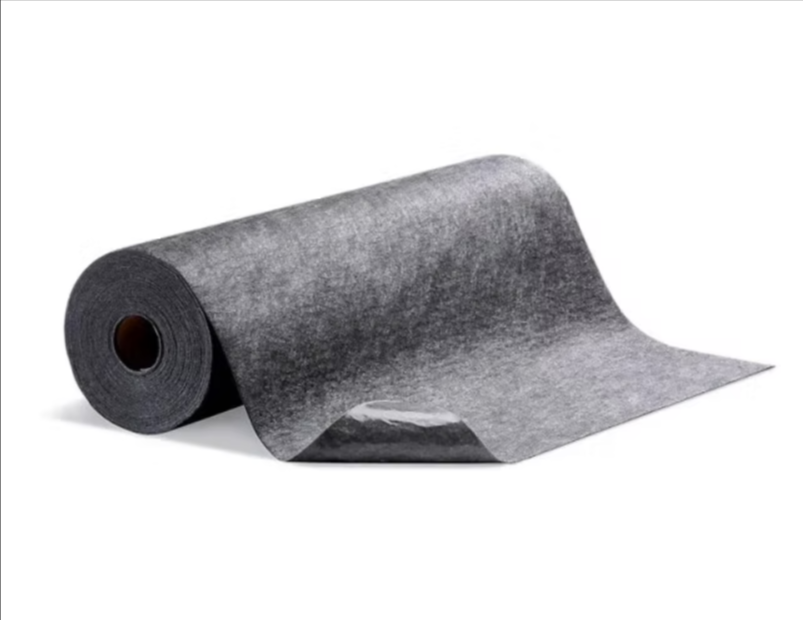Adhesive-Backed Absorbent Floor Mat
- Samridhi Sawalka
- Sep 23
- 3 min read
The Adhesive-Backed Absorbent Floor Mat is a low-profile surface protector that sticks on and stays in place while it soaks up liquids. It also makes walkways safer. The built-in adhesive sticks firmly to clean, dry floors, so the mat lies flat from edge to edge. This is different from loose rugs or regular absorbent pads that can move around or bunch up. This makes a smooth, non-slip surface that soaks up spills, drips, and tracked-in moisture before they spread.

What it is and how it works
The top of these mats is tough and doesn't shed, and the middle is very absorbent. The pressure-sensitive backing sticks directly to concrete, epoxy, tile, and sealed wood, so the mat stays in place even when people walk on it or light carts drive over it. The ability of the material to wick and hold liquids helps keep you from slipping or tracking. Many types can be cut to size or come in rolls with holes punched in them, so they can be used for entryways, benches, machine bases, or full-length aisles.
Key features
● Peel-and-stick backing: Doesn't need tape or Velcro to stay in place, so edges don't curl or bunch up.
● Low profile: Smooth, flat surface that fits under doors and equipment.
● High absorbency: Can handle coolants, water, and many other mild liquids.
● Durable, low-lint face: Doesn't wear down easily and keeps dust out of sensitive areas.
● Trim to fit: Use a utility knife or scissors to make clean cuts for custom coverage.
● Clear removal: It lifts off easily and doesn't leave behind any heavy residue when it's time to replace it.
Where to use
● Entrances and lobbies: To keep people from slipping, collect rainwater and moisture that people track in.
● Production and MRO areas: Place around pumps, compressors, and coolant stations.
● Food and beverage prep zones: Keep floors drier near sinks and washdowns.
● Labs and QC benches: Put it along paths that get a lot of use and under equipment that drips a lot.
● Shipping and warehousing: Use along packing lines, dock doors, and places where batteries can be charged.
Everyday benefits
● Better safety: A surface that doesn't shift or dip helps lower the number of trips and falls.
● Cleaner operations: Liquids are caught at their source, which cuts down on the time needed for tracking and cleaning up.
● Cost control: Replace only the saturated sections of coverage and the right size of coverage to cut down on waste.
● Looks professional: Clean edges and even placement help with 5S and getting ready for an audit.
Selection tips
Depending on how much traffic and spills you expect, choose the right thickness and absorbency. In busy aisles, tops that are thicker and stronger work best. For benches or tight spaces, a thinner mat maximizes clearance. Check compatibility with the liquids you handle and confirm the mat’s temperature range if placing near ovens, steam lines, or hot equipment. If UV exposure is likely at doorways, pick a UV-stable top layer.
Installation and care
The floor needs to be cleaned and dried well. Cut to the right size after measuring and marking. First, peel back a small piece of the liner and line up the leading edge. Then, take off the rest of the liner while pressing the mat down to get rid of any air pockets. For the glue to stick, roll or press hard across the surface. If the mat feels wet or the surface is still damp after light use, it needs to be replaced. Slowly lift one corner and pull it back at a low angle to take it off. If there is a light film left over, clean the floor with a neutral cleaner before putting down a new piece.
Disposal guidance
Throw away used mats in a way that follows local rules and the environmental policies of your building. What the mat absorbed determines what kind of waste it is. Things that got oils, fuels, or some chemicals on them may need to be handled as hazardous waste.
Any area that gets a lot of use can benefit from an Adhesive-Backed Absorbent Floor Mat. It keeps floors dry, makes walkways safer, and speeds up daily cleanup.




Comments